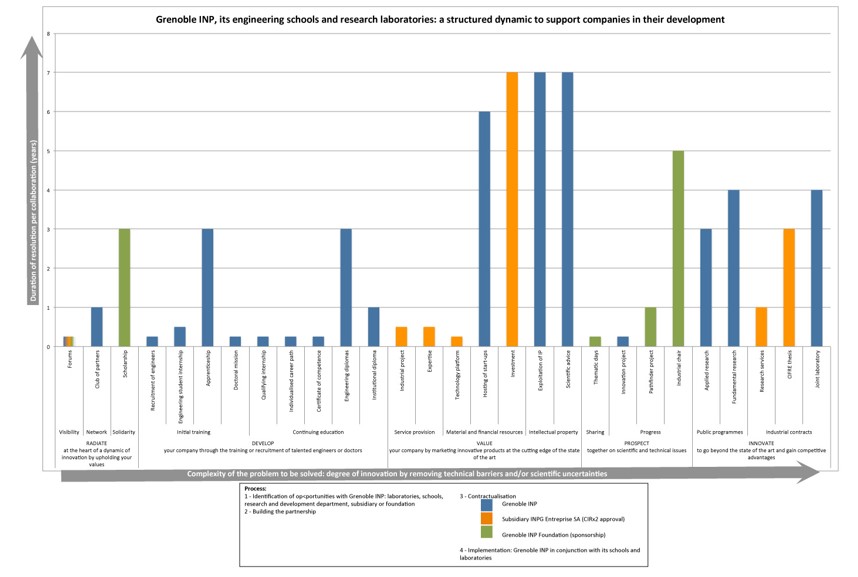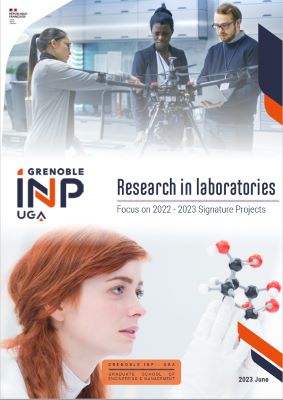Higher education and research, an opportunity for businesses
The competitiveness of companies is a national issue. Innovation is strategic, giving rise to an offensive policy for greater porosity between the public and private spheres. Government initiatives are multiplying with, for example, the creation of the SATTs and the recent PACTE law, which changes the law on innovation. The downside of this dynamic is that the academic world is less legible for companies and it is more difficult to identify the most appropriate system: student recruitment, lifelong learning, contrat collaborative or partnership contrats, all of which are not always easy for a company to decide on.A multi-faceted support offer: two keys to understanding

Grenoble INP proposes two approaches to structuring the support offered to companies:
- On the one hand, the degree of innovation targeted in terms of technical barriers and/or scientific uncertainties to be overcome
- On the other hand, the desired duration of resolution
- to radiate at the heart of an innovation dynamic
- to develop the company by training or recruiting talented students
- to add value to the company by marketing innovative products at the cutting edge of the state of the art
- to jointly prospect on scientific and technical issues
- innovate to go beyond the state of the art and gain competitive advantages
The duration of the resolution filters out all the possibilities in relation to the company’s constraints (for example, three years for a CIFRE, thesis, six months for a student-engineer’s end-of-studies project).
The collaboration is contractualised between the company and the institution, its subsidiary or its foundation, with a financial framework favourable to innovation: for example, the State’s contribution to the funding by CIFREs and the doubling of the CIR. For each type of collaboration, the map clearly indicates the implementing operator: Grenoble INP for public partnerships in training or research; its subsidiary INPG Enterprise SA for any bilateral private collaboration that doubles the CIR; its Foundation for sponsorship-type activities.
What is the use of mapping?
Beyond the isolated characterisation of each type of collaboration (e.g., CIFRE, theses) on this continuum of corporate ambition, the mapping provides a global view of all the possibilities and the logic of activation of the different mechanisms. It facilitates the construction of a strategy for combining possibilities that articulate the regalian missions of public higher education and research institutions: training, research and valorisation.Mapping as an example
For a competitive advantage, a company may seek to innovate point-to-point with a public research laboratory: the ambition is maximum. It can be prepared by student internships aimed at developing the theme in the company. Ideally, these students, thereby familiar with the field and the company, continue to explore the subject in a CIFRE thesis. At the end of the three years, the operation can be renewed. It can also be extended into a joint laboratory to invest jointly in the thematic area. The company’s staff can undergo lifelong training to increase their skills in this field and therefore increase the critical mass. The collaboration can also be extended to other partners via collaborative projects with public funding or sponsorship.The map structures the dynamics of supporting companies in innovation through higher education and research. You can use it in your interactions with companies to identify and articulate the most relevant mechanisms in the context of your collaboration.
Contacts
isabelle.chery@grenoble-inp.frgaelle.calvary@grenoble-inp.fr




